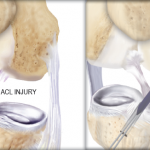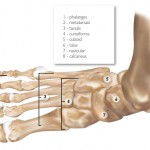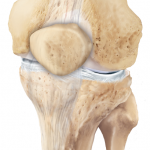
If you participate in sports/recreational activity, or even if you are an avid follower of sports, it’s a sure-fire thing that injuries are going to be a part of it. Our bodies are wonderful machines of motion capable of some amazing things, but eventually things break down or something causes an injury. It will happen to you—the runner, the football player, the golfer – or it will happen to a player on your favorite team.
Typically, the first question that arises when an injury occurs is “What do I do about it/how is it treated?”
And this is the most important thing. I usually provide advice for these things when dealing with athletes and their problems. I plan to deal with specific treatments in future posts. But for this post, I want to address something that isn’t usually discussed: exactly HOW do injuries occur?
Before the obvious answer of “things just happen” is uttered, let’s go a little deeper. It’s universally accepted that injuries, for the most part, fall into one of two categories: acute & chronic.
ACUTE refers to injuries that happen as a result of a play, twist, fall, slip, etc. It’s something that happens on one particular pitch, or play, or swing. You know immediately that you’ve done something, like twisting your ankle on the curb or using your shin to find coffee tables in the dark. Are these things that are just going to happen no matter what? Maybe.
CHRONIC refers to injuries that are the build-up of things over time. Think tendonitis – it’s something that slowly starts coming on and then develops into a bigger problem. In fact, as a free tip, anytime you see the suffix “-itis” in a medical condition, it’s usually an inflammation or irritation problem.
So how do these things happen? It is very safe to say that you can develop both acute and chronic injuries simply by being deconditioned, or out of shape. The guy who twists his knee while playing basketball may be trying to do too much too fast, or the gal playing tennis whose shoulder isn’t 100% may be experiencing strength deficits in her arm that causes the shoulder to do too much. Injuries can happen by not being strong enough. There’s enough evidence out there to show that the stronger football player can handle more tackling before breaking down than the weaker player. I also believe that players who have better reaction times can prevent their joints from damage by being able to put their body in a better injury-prevention position.
What can you do to prevent injuries? Nothing can be 100% preventable. Even the most elite athletes in the best shape of their lives get hurt. What you need to think about is the ability to decrease your injury risk. Some things you can do:
- Proper body composition: too much body fat, not enough muscle and your risk is higher
- Flexibility: muscles & joints with proper range-of-motion have lower injury risk
- Strength training: add more muscle in the right way, and your injury risk goes down
- Reaction: if you’re an athlete in a change-of-direction sport (soccer, football, basketball, etc) utilize things like plyometrics and reaction training to be able to cut & plant with a lower injury risk
- Cardio health: if your body cannot properly process oxygen and tap into appropriate energy systems, your injury risk goes up
Injuries are going to happen, both acute and chronic ones. They are just part of the game. But if you take the time to invest in your body and do some preventive maintenance, you might just be able to avoid an injury.












